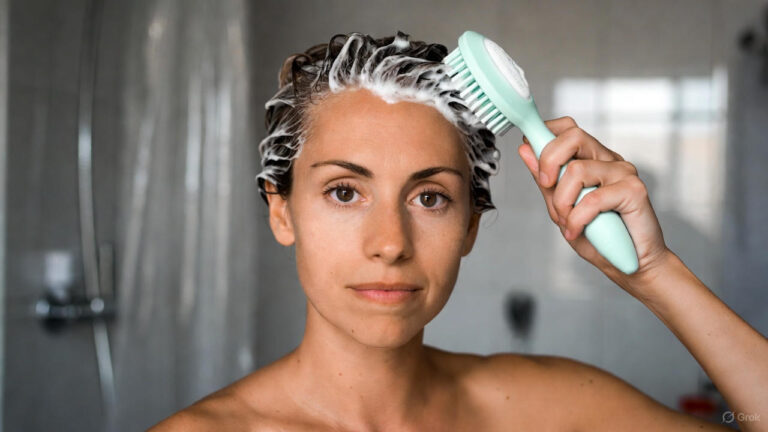As consumers become increasingly conscious of their environmental footprint, beauty brands are reevaluating their practices to align with eco-friendly principles. This paradigm shift involves embracing sustainable practices that not only enhance product quality but also contribute to the well-being of the planet.
In this article, we delve into eight sustainable practices revolutionizing the beauty industry, from responsible sourcing to eco-friendly packaging.
1. Ethical and Transparent Sourcing of Ingredients
Sustainable beauty starts with the careful and ethical sourcing of ingredients. Many beauty brands are now prioritizing transparency in their supply chains, ensuring that ingredients are responsibly harvested, and local communities are treated fairly.
Cosmetic companies are forming partnerships with local farmers, cooperatives, and indigenous communities to source raw materials ethically. By promoting fair trade practices, brands not only contribute to the economic empowerment of communities but also ensure the long-term availability of key ingredients.
2. Clean and Green Formulations
The shift towards clean and green formulations is a hallmark of sustainability in the beauty industry. Brands are increasingly focusing on creating products with minimal environmental impact, avoiding harmful chemicals, and utilizing biodegradable or recyclable materials.
This practice involves eliminating ingredients like parabens, sulfates, and synthetic fragrances, which not only benefit the environment but also cater to the growing demand for natural and skin-friendly products. Consumers are now able to choose beauty products that align with their values of health and sustainability.
3. Water Conservation Efforts in Manufacturing
Water is a precious resource, and the beauty industry is recognizing its responsibility to conserve this essential element. Sustainable beauty practices include implementing water-efficient technologies in manufacturing processes, reducing water waste, and investing in eco-friendly production methods.
Innovations such as waterless formulations and water recycling systems are gaining traction, minimizing the environmental impact of beauty product manufacturing. These efforts not only contribute to water conservation but also address concerns about water scarcity in various regions.
4. Eco-Friendly Packaging Solutions
Packaging has long been a significant contributor to environmental waste, but the beauty industry is making strides towards more sustainable alternatives. Brands are increasingly adopting eco-friendly packaging solutions, such as recyclable materials, biodegradable packaging, and innovative designs to minimize waste.
Refillable packaging is becoming a popular choice, allowing consumers to reuse containers and reduce the overall demand for new packaging materials. This sustainable approach not only benefits the environment but also aligns with the growing consumer preference for brands that prioritize eco-conscious packaging.
5. Carbon Footprint Reduction
Addressing the carbon footprint of beauty products is a crucial aspect of sustainability. Brands are implementing measures to reduce greenhouse gas emissions throughout the entire product lifecycle, from ingredient sourcing to manufacturing, distribution, and disposal.
Some companies are investing in renewable energy sources, utilizing carbon offset programs, and optimizing transportation routes to minimize their environmental impact. By actively working towards carbon neutrality, beauty brands are contributing to the global effort to combat climate change.
6. Cruelty-Free and Vegan Beauty
The ethical treatment of animals is a central concern for many consumers, leading to a rise in cruelty-free and vegan beauty products. Brands are increasingly committing to cruelty-free practices by eliminating animal testing and seeking certification from cruelty-free organizations.
Vegan beauty takes this a step further, excluding animal-derived ingredients from formulations. The beauty industry’s embrace of cruelty-free and vegan principles aligns with the growing awareness of ethical consumption and animal welfare.
7. Social Responsibility and Community Engagement
Sustainable practices in the beauty industry extend beyond environmental concerns to encompass social responsibility and community engagement. Beauty brands are actively supporting social causes, investing in community development projects, and fostering inclusivity and diversity.
By engaging with local communities and supporting social initiatives, beauty brands contribute to positive social impact. This approach not only enhances the brand’s reputation but also aligns with the values of socially conscious consumers who seek products from companies committed to making a difference.
8. Extended Product Lifecycles and Upcycling Initiatives
Promoting sustainability involves encouraging consumers to make conscious choices about their beauty products’ lifecycles. Beauty brands are adopting strategies such as promoting product durability, encouraging responsible consumption, and initiating upcycling programs.
Upcycling involves repurposing or transforming used beauty products or packaging into new items, reducing waste and promoting a circular economy. By encouraging consumers to participate in upcycling initiatives, beauty brands foster a sense of responsibility and environmental stewardship.
Conclusion
The beauty industry’s evolution towards sustainability is a testament to the growing global awareness of environmental and ethical considerations. From ethical ingredient sourcing to eco-friendly packaging solutions, beauty brands are embracing practices that prioritize both product quality and the health of the planet. As consumers continue to demand transparency and sustainability, the beauty industry’s commitment to these values is likely to shape a greener and more conscious future.
FAQs
Q1: Are sustainable beauty products as effective as traditional ones?
Yes, sustainable beauty products can be just as effective as traditional ones. In fact, many consumers find that clean and green formulations often lead to healthier skin over the long term.
Q2: How can I know if a beauty brand is truly committed to sustainability?
Look for certifications from reputable organizations, such as cruelty-free certifications or eco-friendly packaging labels. Additionally, research the brand’s sustainability initiatives, transparency in sourcing, and commitment to reducing its environmental impact.
Q3: What can consumers do to support sustainable beauty practices?
Consumers can support sustainable beauty practices by choosing products with eco-friendly packaging, opting for cruelty-free and vegan options, and participating in recycling or upcycling programs offered by beauty brands. Additionally, educating oneself about a brand’s sustainability initiatives and supporting companies with transparent and ethical practices can make a positive impact.



